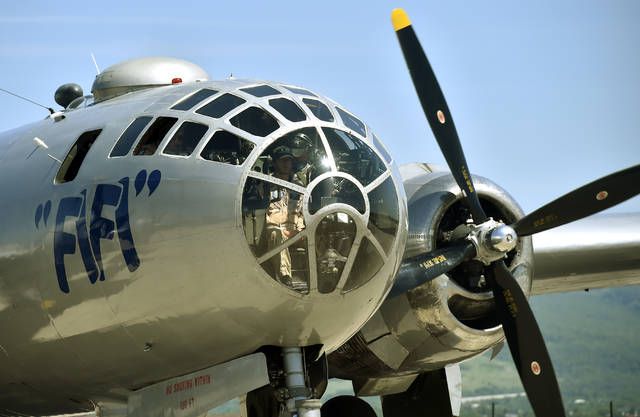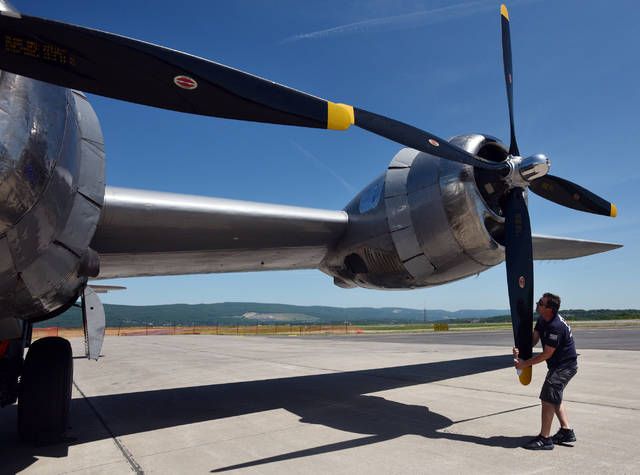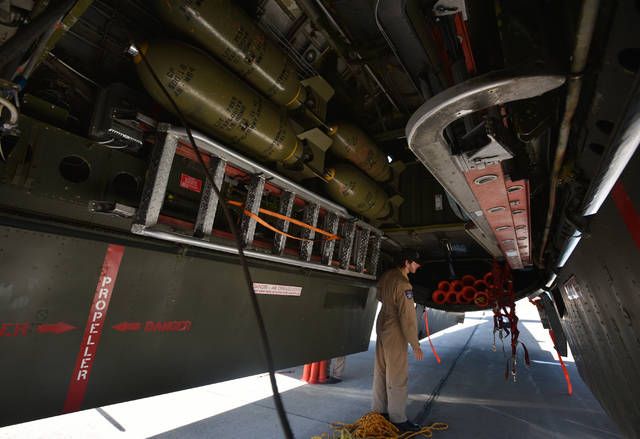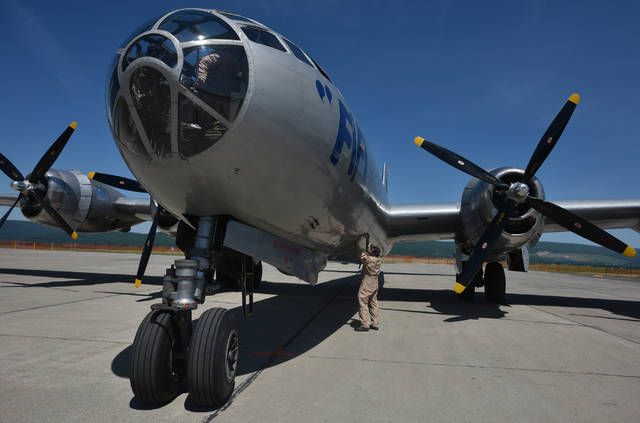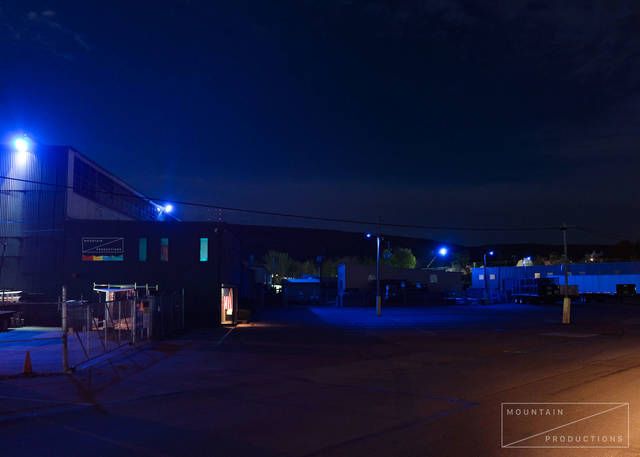AVOCA — The Enola Gay was one. The planes responsible for the famous — or notorious — incendiary bombing of Tokyo were part of the fleet. Built to fly as high as 31,000 feet, they were the reason the U.S. military discovered the jet stream. And one of them landed in Avoca, a day late but hardly any less impressive for the delay.
The B-29 Superfortress Fifi landed late Tuesday morning, delayed 24 hours from the departure point in Johnstown by a low cloud ceiling Monday. The one-time state-of-the-art bomber — the first to be pressurized, thus allowing the near-stratospheric altitudes — taxied to the Wilkes-Barre/Scranton International Airport cargo area with only two of the four engines spinning. Of course, with 16.5-foot propellers, that was still roar enough to emphatically announce its arrival.
“It’s a Boeing, and when it’s up in the air, it flies almost as smooth as a Boeing commercial aircraft,” pilot Allen Benzing said while others in the six-man crew wiped off engine oil or stood with their torsos disappearing in the cavernous payload bays, originally built to hold up to 20,000 pounds of bombs. The Enola Gay was modified to hold the first atomic bomb, code named “Little Boy.”
“Of course, it’s a military aircraft,” Benzing continued. “So it can be a little demanding on the ground.”
The original B-29s flew so high in early raids over Japan they discovered the jet stream, a powerful wind that made it a struggle to stay on course, and contributed to early disappointment in bombing accuracy and effectiveness. Benzing said he had flown many times over Japan during his career as a commercial pilot, and he could see “how a 200-knot cross wind could be quite a ride.”
Keeping course would have fallen to the navigator, and Benzing proudly showed off a map — on the navigator’s little table — signed by Captain Theodore “Dutch” Van Kirk, the man who guided the Enola Gay over the skies of Hiroshima. Is it worth a lot?
“It’s worth a lot to us,” Benzing said.
Fifi is one of only two B-29s still flying the skies, a striking fact considering 3,970 were built from 1942 to 1946. It has come to Avoca courtesy of the Commemorative Air Force, and is available for public inspection from 9 a.m. to 5 p.m. through Sunday. Despite information provided in some public releases, Fifi settled down in the cargo area of the airport, and parking will be through the cargo gate. Entry is $10 for adults and $5 for ages 10 to 18, free for those younger than 10.
Two other vintage craft will be on display, a C-45 Expeditor dubbed “Bucket of Bolts” (a well-earned moniker, pilot Johnathan Oliver said with a smile), and T-6 Texan.
You can book a flight on Fifi while it’s here through airpowersquadron.org. Prices start at $550 for a gunner compartment seat, and go as high as $1,595 for the premier spot in the bombardier’s seat, situated ahead of and a bit below the pilot seats, in a clear nosecone, affording close to a 180-degree view in all directions. You can take a chance and sign up for a flight at the event, though it costs a little more.
Just getting to see such a rare bird up close on the ground is likely thrill enough for most. It still sports the 10 machine guns — remote controlled, which was a major innovation at the time that reduced crew, Benzinger said, and thus extended flight time, thanks to less weight.
The sleek aluminum skin, the classic sinusoidal tail nearly three stories high when parked, the black propeller blades taller than the men who wipe them down, all add up to a piece of vintage equipment Benzinger described succinctly.
“It’s a beautiful machine.”
